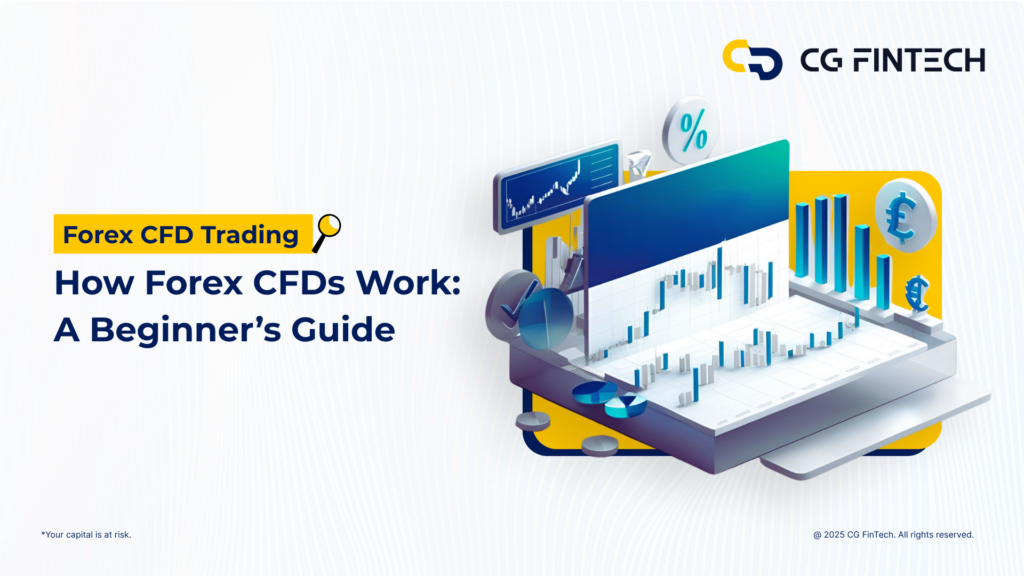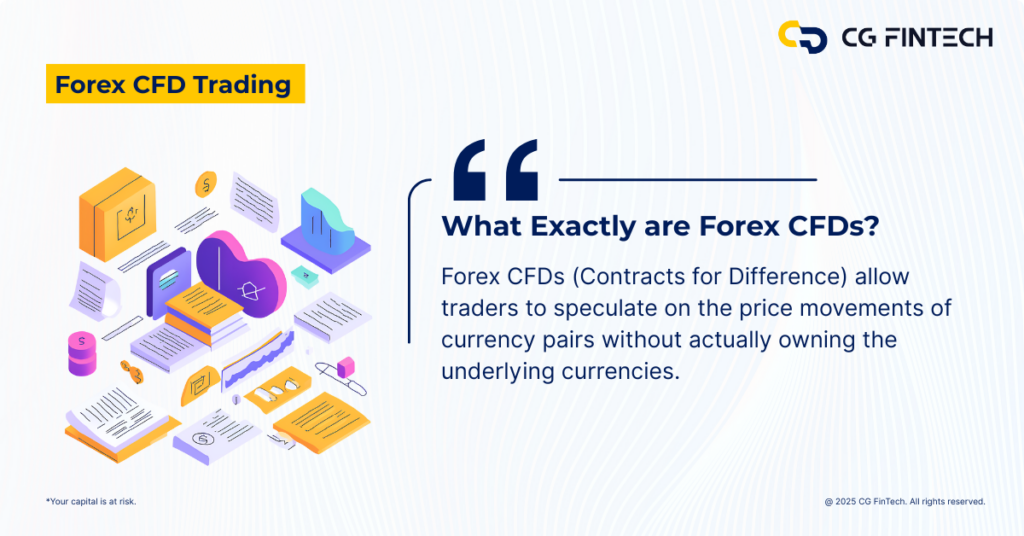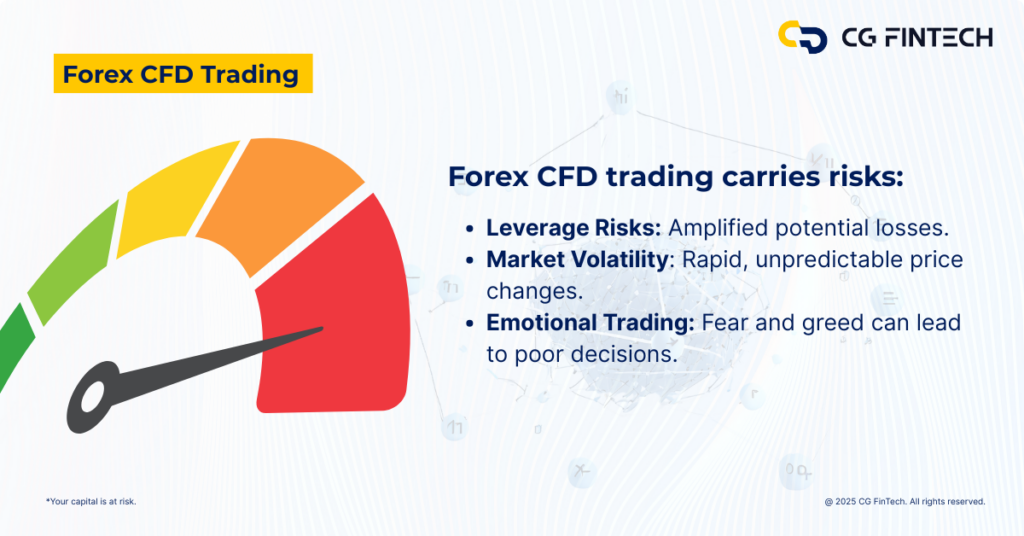
Table of Contents
- Introduction
- What Exactly are Forex CFDs?
- Essential Terminology Explained
- Step-by-Step: How Forex CFD Trading Works
- Benefits & Opportunities of Forex CFDs
- Detailed Discussion on Risks and How to Avoid Them
- Actionable Tips for Success in Forex CFD Trading
- Getting Started: A Practical Guide
- Frequently Asked Questions (FAQs)
- Summary and Quick Takeaways
Introduction
Forex CFD trading has grown dramatically in popularity due to its ease of access and significant profit potential. But what exactly is Forex CFD trading, and how can beginners successfully navigate this financial tool? In this comprehensive guide, you’ll learn everything you need to know to confidently start trading Forex CFDs.
What Exactly are Forex CFDs?

Forex CFDs (Contracts for Difference) allow traders to speculate on the price movements of currency pairs without actually owning the underlying currencies. This form of trading involves making predictions on whether the value of a currency pair will rise or fall.
Unlike traditional forex trading, where you buy and sell the actual currencies, Forex CFDs involve trading contracts based on the prices of currency pairs. This approach offers greater flexibility, particularly as it enables traders to go long (buy) or short (sell) and potentially profit from both rising and falling markets.
For example, if you believe EUR/USD will increase in value, you could open a long position. Conversely, if you anticipate the value will decrease, you would open a short position.
Essential Terminology Explained
Understanding key terminology is crucial for navigating Forex CFD trading:
- CFD (Contract for Difference): A contract between trader and broker to exchange the difference between the entry and exit prices of a financial instrument.
- Currency Pairs: Two currencies quoted together, like EUR/USD.
- Spread: The difference between the buying price (bid) and selling price (ask).
- Pips: The smallest increment of price movement, typically 0.0001 for major pairs.
- Leverage: Using borrowed capital from the broker to magnify potential gains and losses.
- Margin: The initial amount required to open a leveraged trade.
- Going Long vs. Going Short: Buying if you expect prices to rise (long) or selling if you expect them to fall (short).
- Stop Loss & Take Profit: Automated orders to close trades at predetermined price levels to manage risk and lock in profits.
Step-by-Step: How Forex CFD Trading Works
Here’s a detailed breakdown of the trading process:
Step 1: Select and Analyze Currency Pairs
Identify currency pairs and conduct technical and fundamental analysis to forecast potential price movements.
Step 2: Decide Your Position
Choose whether you’ll go long (buy) if you expect an upward trend, or short (sell) if you anticipate a downward trend.
Step 3: Leverage and Margin
Understand your broker’s leverage offerings. For instance, with a leverage of 30:1, you only deposit a small percentage (margin) of the total trade value.
Step 4: Managing Trades
Monitor your trades closely, ensuring you’re aware of margin levels and market fluctuations. Adjust positions accordingly.
Step 5: Closing the Trade
Exit the trade at your desired profit or stop-loss level, realizing your gains or losses based on price differences.
Benefits & Opportunities of Forex CFDs

Forex CFDs offer numerous advantages:
- Accessibility: Trade multiple currency pairs from a single account.
- Profit Potential: Benefit from leverage to maximize profits.
- Flexibility: Profit from both rising and falling markets.
- Liquidity: Easy entry and exit due to high market liquidity.
Detailed Discussion on Risks and How to Avoid Them

Forex CFD trading also carries risks:
- Leverage Risks: Amplified potential losses.
- Market Volatility: Rapid, unpredictable price changes.
- Emotional Trading: Fear and greed can lead to poor decisions.
Risk management strategies:
- Use moderate leverage.
- Employ stop-loss orders.
- Limit trade size relative to your total capital.
- Continuously educate yourself about market conditions.
Actionable Tips for Success in Forex CFDs Trading
- Start with a demo account to practice.
- Use leverage responsibly.
- Stick to a disciplined trading plan.
- Educate yourself continuously through books, webinars, and courses.
- Consistently apply risk management techniques.
Getting Started: A Practical Guide
To begin:
- Research and choose a reliable broker.
- Open and fund your account.
- Familiarize yourself with the trading platform.
- Start small and gradually build experience.
How Forex CFDs Work: FAQs
- Is Forex CFD trading safe? It can be safe with proper risk management.
- How much money do I need? You can start small, typically from as low as $100.
- Can beginners profit from Forex CFDs? Yes, with careful planning and risk management.
- Is CFD trading suitable for beginners? Yes, provided you invest in learning and practicing first.
Summary and Quick Takeaways
Forex CFDs are an accessible way to participate in currency markets. Success comes from understanding how they work, managing risks, applying disciplined strategies, and continuous learning.
Happy trading!
Follow CG FinTech for more CFDs Trading Guide!
Forward Looking Statement Disclaimer
This document contains forward-looking statements, which can generally be identified by the words “expects,” “believes,” “continues,” “may,” “estimates,” “anticipates,” “hopes,” “intends,” “plans,” “potential,” “predicts,” “should,” “will,” or similar expressions. Such statements are based on CG FinTech’s current expectations and assumptions, but actual results could differ materially from those anticipated due to a number of risks and uncertainties. CG FinTech does not guarantee the accuracy or completeness of these statements and undertakes no obligation to update or revise any forward-looking statements.
Disclaimer
The information provided herein is for informational purposes only and does not constitute an offer or solicitation to buy or sell any financial instruments. Trading Contracts for Difference (CFDs) and foreign exchange (forex) carries a high level of risk and may not be suitable for all investors. It is important to fully understand the risks involved and seek independent financial advice if necessary.

Leave a Reply